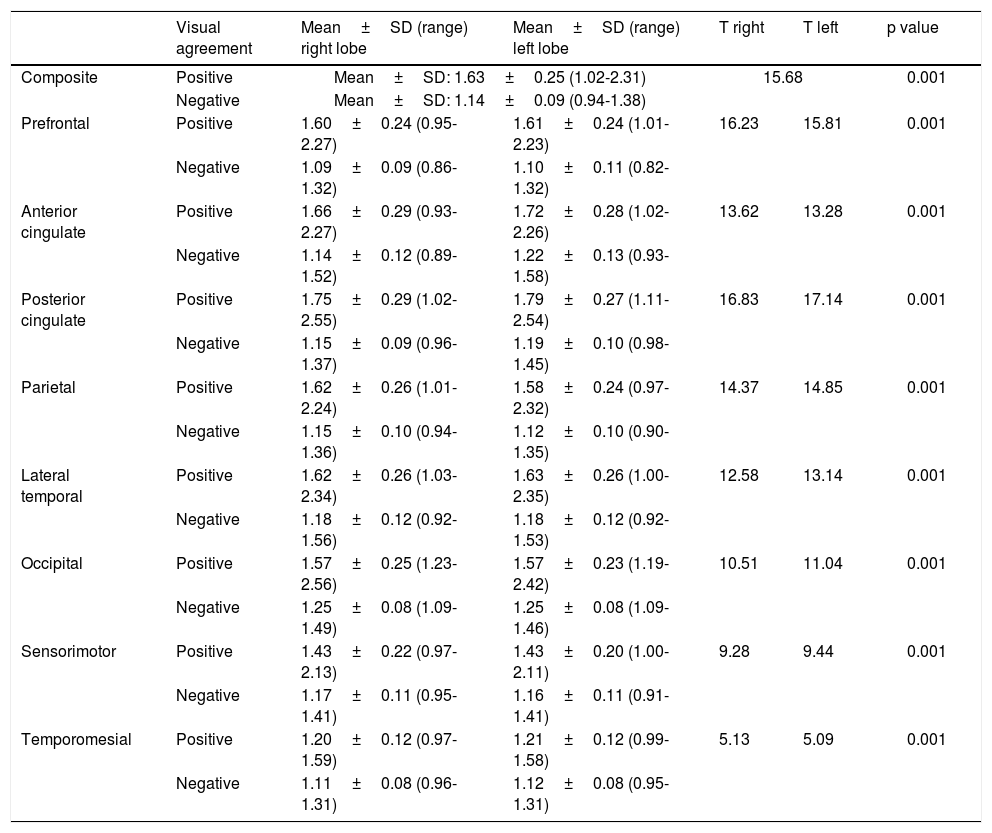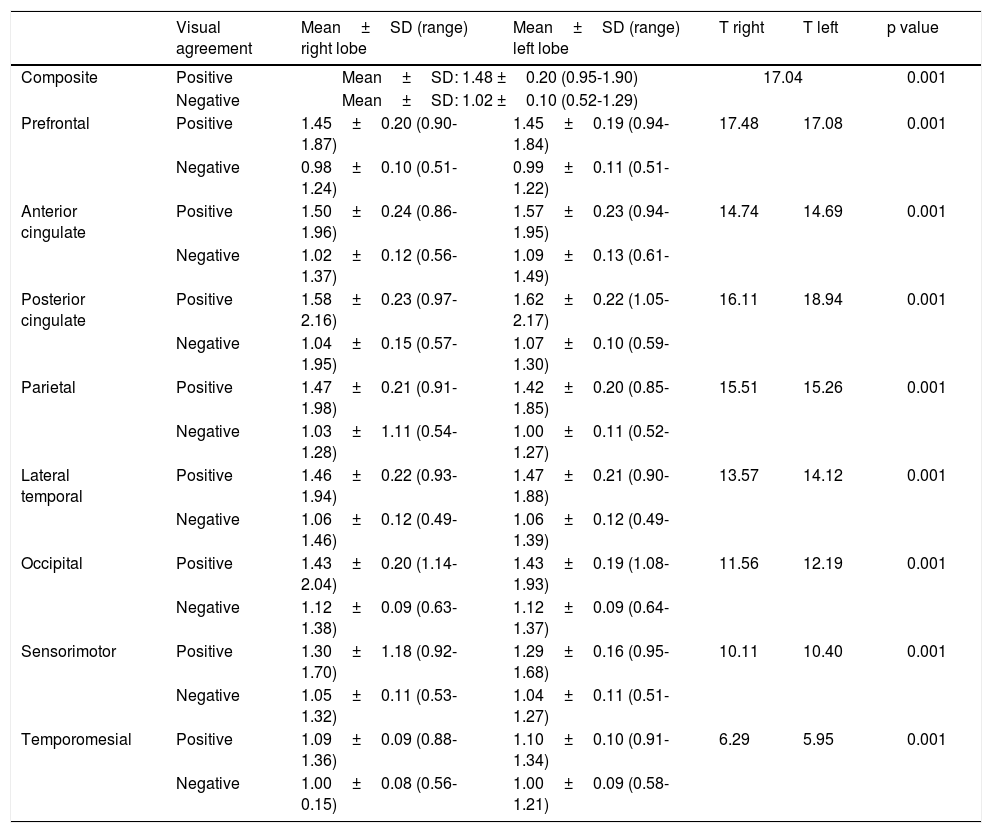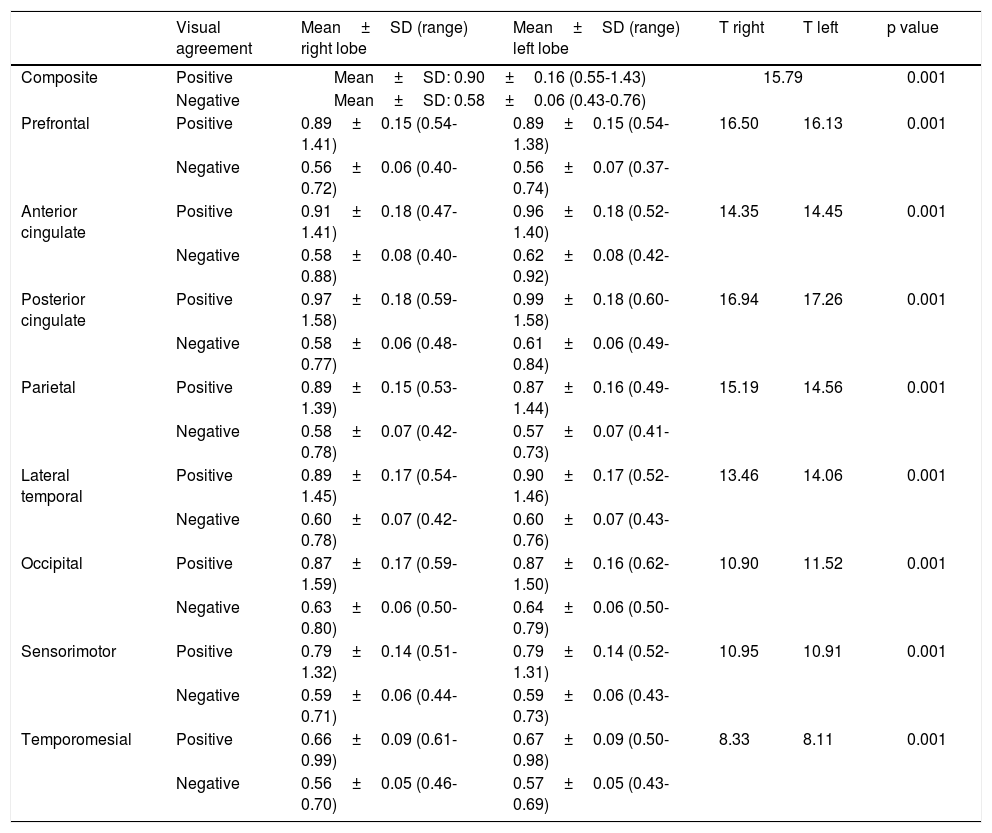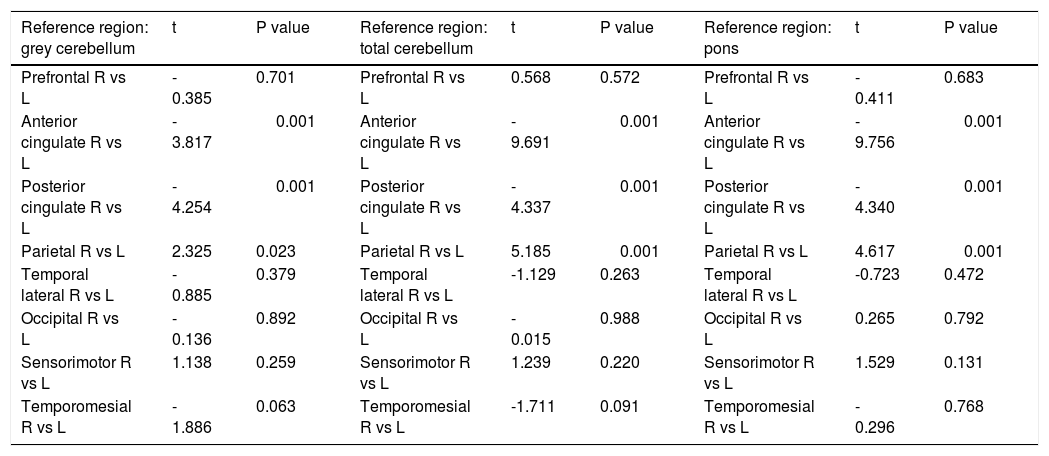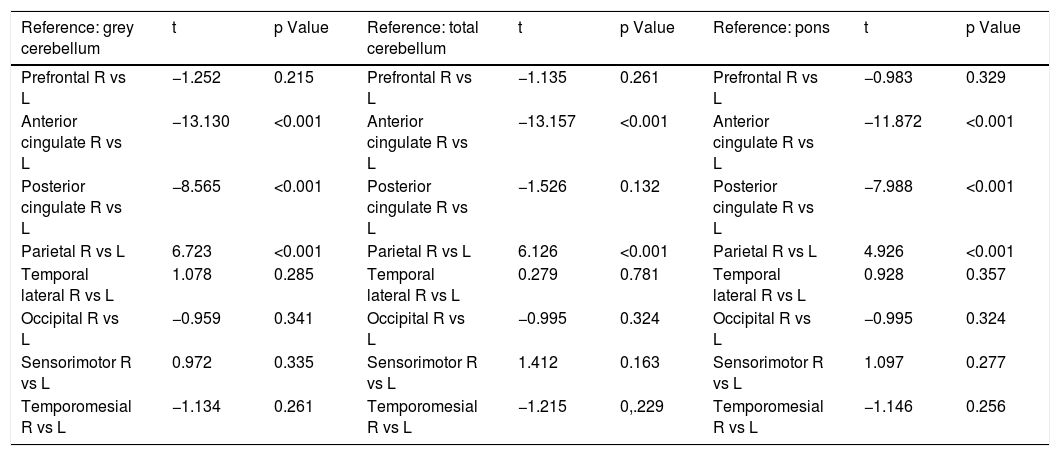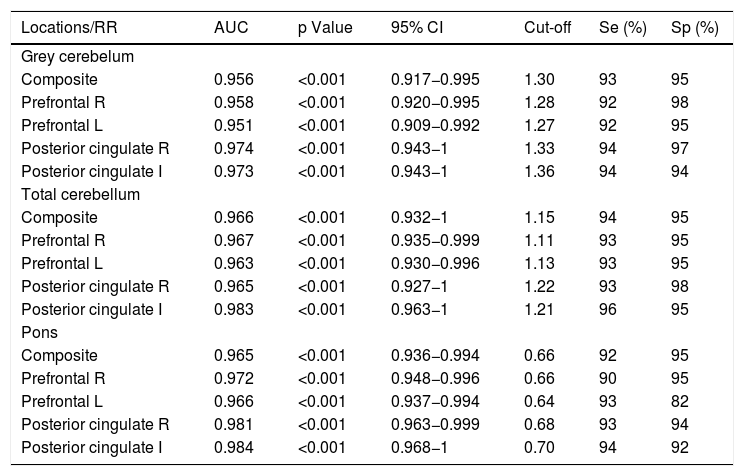To assess the added value of semiquantitative parameters on the visual assessment and to study the patterns of 18F-Florbetaben brain deposition.
Materials and methodsRetrospective analysis of multicenter study performed in patients with mild cognitive impairment or dementia of uncertain origin. 18F-Florbetaben PET scans were visually interpreted by two experienced observers, analyzing target regions in order to calculate the interobserver agreement. Semiquantification of all cortical regions with respect to three reference regions was performed to obtain standardized uptake value ratios (SUVRs). The ability of SUVRs to predict the visual evaluation, the possibility of preferential radiotracer deposition in some target regions and interhemisphere differences were analyzed.
Results135 patients were evaluated. In the visual assessment, 72 were classified as positive. Interobserver agreement was excellent. All SUVRs were significantly higher in positive PET scans than in negative ones. Prefrontal area and posterior cingulate were the cortical regions with the best correlations with the visual evaluation, followed by the composite region. Using ROC analysis, the SUVRs obtained in same target locations showed the best diagnostic performance.
ConclusionsThe derived information from target regions seems to help the visual classification, based on a preferential amyloid β deposit, allowing machine learning. The amyloid β deposit, although diffuse in all cortical regions, seems not to be uniform and symmetric.
Determinar el valor añadido de los parámetros semicuantitativos en el análisis visual y estudiar los patrones del depósito cerebral de 18F-Florbetaben.
Material y métodosAnálisis retrospectivo de pacientes con deterioro cognitivo leve o demencia de origen incierto procedentes de un estudio multicentrico. Los PET con 18F-Florbetaben fueron interpretados de forma visual por dos observadores independientes, analizando las regiones “diana” con la finalidad de calcular el acuerdo interobservador. Se realizó análisis semicuantitativo de todas las regiones corticales con respecto a tres regiones de referencia para obtener índices de captación (SUVRs). Se analizó la capacidad del los SUVRs para predecir el resultado de la interpretación visual, la posibilidad de deposito preferencial del radiotrazador en algunas regiones “diana” así como las diferencias interhemisféricas.
ResultadosSe evaluaron 135 pacientes. En la valoración visual, 72 estudios se clasificaron como positivos. El acuerdo interobservador fue excelente. Todos los SUVRs fueron significativamente superiores en pacientes con PET positivos con respecto a los negativos. Las regiones corticales correspondientes al área prefrontal y al cingulado posterior mostraron la mejor correlación con la evaluación visual, seguidas por la valoración integrada cortical. Usando análisis de ROC, los SUVRs obtenidos en las mismas regiones “diana” mostraron la mejor capacidad diagnóstica.
ConclusionesLa información obtenida de las regiones “diana” parece ser de ayuda en la clasificación visual, basado en un depósito preferencial de amiloide β, lo que permitiría el “machine learning”. El deposito de amiloide β, aunque difuso en todas las regiones corticales, parece no ser uniforme ni simétrico.
Article

Revista Española de Medicina Nuclear e Imagen Molecular (English Edition)








